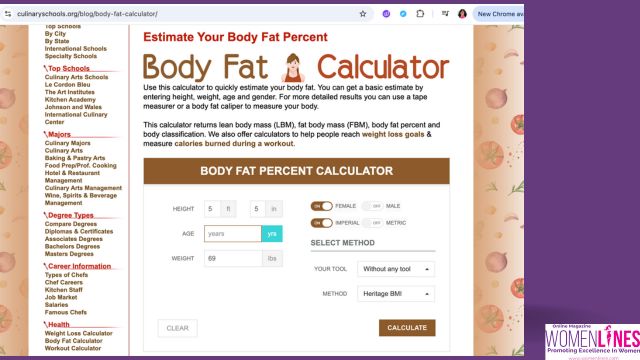How I Turned My Health Goals into Reality
I’m a self-proclaimed “internet junkie,” especially when it comes to searching for tips on health goals and wellness. There’s something about sifting through countless health articles and tools that’s as energizing to me as a morning workout. It’s almost like a treasure hunt for the best tips, tricks, and resources that make life just a little bit better. I’ve always been on the lookout for quality health content that doesn’t just talk at you but empowers you to make real, impactful changes.
When it comes to health, I’ve come to learn that the earlier we start monitoring, the better. We’re all guilty of putting ourselves last, but our health doesn’t wait. The truth is, whether you’re in your 20s or 50s, staying informed and proactive about our bodies can truly shape our future. The journey begins with awareness and the tools to make that awareness actionable.
Navigating Health and Fitness with the Right Tools
Embarking on a weight-loss journey or simply aiming for better health often starts with a commitment to exercise and being more mindful of what we eat. For many of us, myself included, this began with small steps—like squeezing in a few exercises each day and paying closer attention to food portions. Over time, I realized that a bit more awareness could make a significant difference. Seeing friends invest in personal trainers and specialized routines broadened my approach. Gone were the days of sticking to the same exercises daily, as I learned the importance of working different muscle groups and adjusting routines to avoid plateaus.
As my curiosity grew, I explored terms that once felt intimidating: body fat percentage, BMI, and calorie tracking. Though numbers were never my strong suit, diving into these metrics could help me take my fitness journey to a new level. With a bit of internet digging, I stumbled upon some user-friendly tools that made understanding these concepts less overwhelming. Websites like culinaryschools.org’s weight-loss page offered more than just figures; they provided an approachable way to break down the elements of fitness in an actionable way.
Making Weight Loss Less of a Guessing Game
In the early stages of my fitness journey, I focused on basic calorie counting and ensuring I moved more daily. But as I became more serious about setting realistic weight-loss goals, I realized there’s more to consider than just calorie intake and physical activity. The weight-loss page provided insights into mindful eating, emphasizing not just the amount but also the type and quality of food. Through these small shifts—like choosing nutrient-dense foods over empty calories—I noticed a difference in how I felt and the energy I had throughout the day.
What’s interesting about this page is that it doesn’t just stop at generic advice; it dives into tips for creating a sustainable routine and making mindful food choices. From portion control to understanding food groups, these small details can play a huge role in reaching long-term health goals. For anyone feeling a bit lost at the start, the weight-loss guide offers a roadmap that’s both manageable and insightful.
Discovering the Benefits of Body Fat Calculators

Once I began to explore more about fitness, I learned that tracking my weight wasn’t the only metric to consider. Body fat percentage is another critical measure that reveals more about health than weight alone. After all, two people of the same weight can have very different body compositions based on muscle and fat percentages. But as someone who has never been a fan of numbers, the concept of calculating body fat seemed daunting.
The body fat calculator simplified this process, helping me calculate an estimate of my body fat percentage based on easily accessible measurements. Understanding this number helped me set better fitness goals and gave me insight into which types of exercise might support my needs best. For instance, focusing on strength training helped lower my body fat percentage, as it builds muscle, which in turn boosts metabolism. Now, I have a fuller picture of what works for my body, and it’s encouraging to see progress based on data rather than guesswork.
Making Sense of Calories Burned During Exercise
One aspect that surprised me on this journey was how much more effective my workouts became once I started tracking calories burned. Initially, my exercise routine consisted of basic activities, and I didn’t pay much attention to how each activity impacted my caloric burn. But as I delved deeper, I wanted to maximize the time I spent exercising.
The workout calories calculator was a revelation in understanding which exercises were the most efficient for my goals. Listing 20 types of exercises, it gave me an estimate of calories burned based on factors like body weight and exercise intensity. This helped me see that a 30-minute run burned more calories than the same amount of time spent on gentler activities like yoga, even though both are valuable for different reasons. Armed with this knowledge, I could balance high-intensity and low-intensity workouts to avoid burnout while staying on track with my goals.

For anyone, this calculator can be a handy tool to add variety to workouts, understand the caloric impact, and ensure each session contributes meaningfully to fitness targets. It’s an especially useful resource for those who want to maintain an active lifestyle without over-exerting themselves.
Embracing Small Wins and Sustainable Changes
Using these tools brought a sense of accomplishment to my fitness journey. Instead of feeling overwhelmed by numbers or metrics, I could see how each choice I made—whether about food, exercise type, or portion control—added up over time. It’s easy to feel discouraged when goals seem far off, but breaking them down into manageable steps brings a feeling of control and motivation.
As women, our health journeys are uniquely personal, often influenced by schedules, family responsibilities, and different body types. Embracing a structured approach with tools like these can empower us to make choices based on data, not just intuition. And while I may have started my journey as a numbers-shy “internet junkie,” I’ve come to see that a little bit of learning each day can lead to long-lasting change.
These calculators and guides take away the guesswork and make fitness something that feels achievable, whether you’re just beginning or deep into your journey.
Ultimately, fitness isn’t just about hitting a number on the scale or achieving a particular body type; it’s about finding a balance that works for our individual needs and lifestyles. With the guidance these tools provide, we can approach health in a way that’s sustainable, achievable, and uniquely suited to us. So, whether you’re a newcomer to the fitness world or someone seeking to deepen your knowledge, these calculators can be an invaluable companion, helping turn fitness from a distant goal into a manageable and rewarding journey.
Charu Mehrotra
Founder Womenlines.com
Alaso read: The Mewing Exercise Craze for Slim Face: Fact, Fiction, or Feline Fantasy
Follow Womenlines on Social Media

















